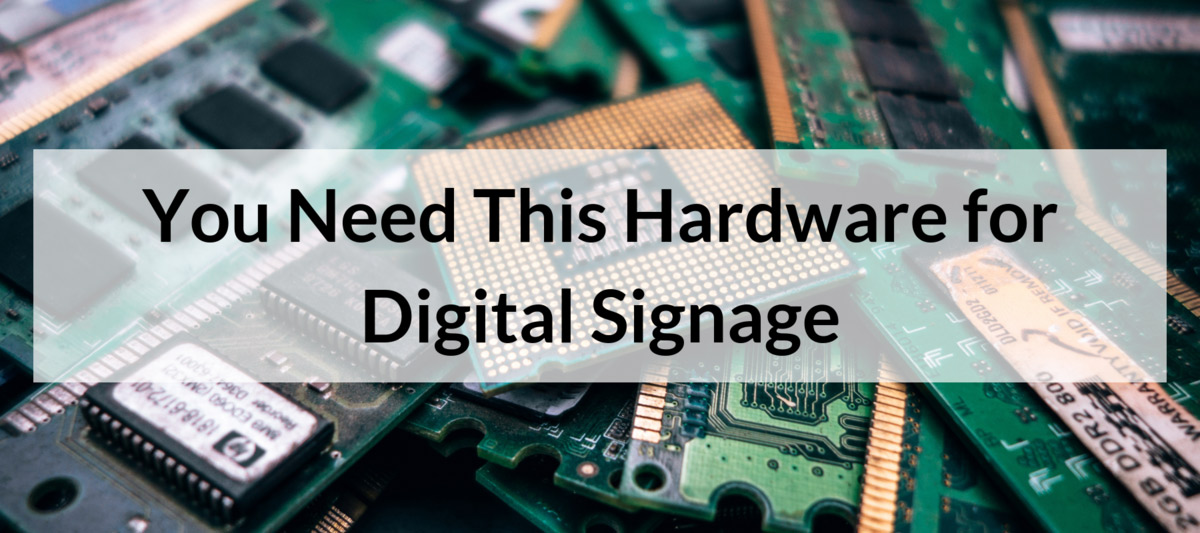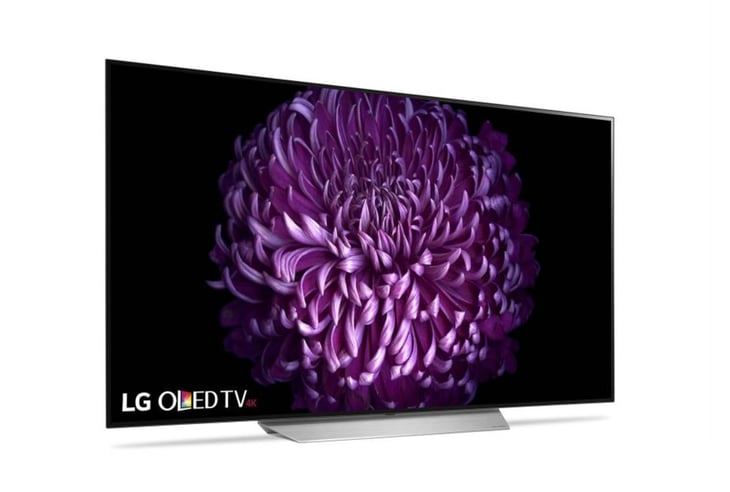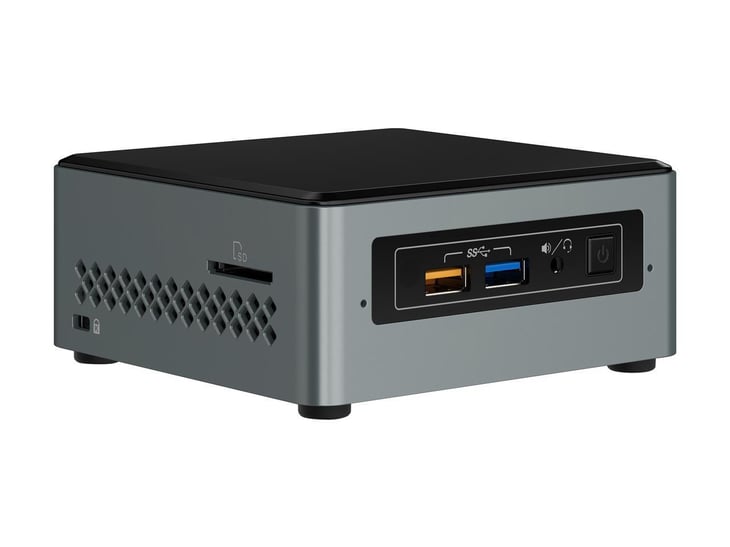
You Need This Hardware for Digital Signage
You’ve seen digital signage even if you didn’t know it. It’s what menu boards are at fast-food restaurants, what finance labs use for marketwalls. But what do you need to get started at your school?
There are three components to digital signage: digital signage software, a digital display (or TV), and a media player that’s connected to your TV.
This post will cover what hardware you should consider. The next post will cover what you should look for in digital signage CMS software.
Digital Display

Is there a difference between the display (or TV) that you see hanging in a restaurant with a digital menu board and the one you have hanging in the living room of your house? Possibly--but not necessarily.
Most people don’t realize this, but there are actually two types of TVs you can buy for digital signage: a commercial TV and a consumer TV.
What’s the difference?
Staring at the TV as a viewer, you probably would not be able to see any difference at all. The back of the TV is an entirely different story.
The back of the TV has different ports for inputs not typically seen in the household (like VGA inputs).
The hardware inside a commercial TV is also built differently. Consumer TVs are made to be used for movies, games and TV shows--content that isn’t static and is always moving; it’s also built to be used for a few hours a day.
Commercial TVs can have images that don’t change as rapidly (like a photo slideshow) and are used for extended periods (or 24/7).
You can’t just walk into Costco and say “I want a commercial TV.” These TVs are not typically sold at brick-and-mortar stores; your best place is online, though some specialized stores will have it.
The price of a commercial TV is a little higher than a consumer TV, which is obviously something to consider if your school is on a budget.
What’s right for you? It depends on what you will be doing with your digital signage.
Media Player

Once you have picked out a TV for your digital signage, you need a media player.
A media player plugs into your TV and connects the presentations that you create on your computer to your TV.
You probably have a Fire Stick, Chromecast, Roku or Apple TV connected to your TV at home. A digital signage media player is the same thing--only more powerful and capable of running all day.
Just like Fire Sticks and Chromecasts, the media player is small and plugs into your TV via an HDMI, and hides nicely behind your TV. Most people forget they even have media players.
Important Notice
Rise Vision recommends the Amazon Signage Stick instead of Amazon Fire Stick or Fire TVs due to its affordability, performance, reliability, and built-in Mobile Device Management (MDM) capabilities. The MDM feature allows users to easily manage and control their displays remotely, ensuring device and application updates. The Amazon Signage Stick is purpose-built for digital signage and integrates directly with Rise Vision.
The Amazon Signage Stick is currently only available in the United States. You can purchase it here.
For alternative media player recommendations, please check out our hardware list here.
With the release of the new Amazon Signage Stick, Amazon Fire Sticks and Fire TVs should not be used for digital signage moving forward.
What kind of media player should you get?
Rise Vision supports multiple operating systems, and we don’t lock you down to any one media player.
Our recommended partner, TheBookPC has three different media players that all work well with our software.
If you are using a lot of videos in your presentation, or you want to future-proof your media player for content that requires more memory, we recommend the Intel Nuc i3.
Once you have your media player, you’ll need to install Rise Player on it.
Rise Player is the Rise Vision software that connects your media player to the cloud-based software you use to create the presentation.
The installation is essentially plug and play. This article will help you get started if you need extra help. The whole process takes less than five minutes!
Once you create a free account, here are some ideas for what you can do with your digital signage.
- How Schools Can Use Raspberry Pi for Digital Signage
- How-to-Use Your Display as a Trivia Game
- 50+ Ways Schools Can Use Digital Signage
Reduce Hardware Costs with a Rise Vision Hardware as a Service Subscription
Buying your digital signage hardware separately can be quite expensive. Not to mention the expenses you’ll be making for your displays’ software needs. But what if we told you that you can purchase both your digital signage software and hardware in one place?
Rise Vision offers Hardware as a Service subscriptions that can simplify your digital signage and eliminate upfront CAPEX costs.
Our Avocor R Series Hardware as a Service comes complete with a display and built-in media player. You won’t need to purchase an external media player, reducing your hardware costs and making procurement easier.
We also have the Rise Vision Media Player Hardware as a Service, a high-performance subscription media player with plug-and-play functionality optimized to work with the Rise Vision software.
For both subscriptions, you get complete hardware management and support from Rise Vision. We’ll handle the technical aspect of digital signage so you can focus on communicating your message.
Learn more about our offers by reaching out to our team.
More From Our Blog
-

Screen Sharing for Workplace Collaboration | Rise Vision
Screen-sharing technology has transformed how teams communicate and work together in real-time, regardless of their location. It can make presentations more engaging, support remote work, and speed[…]
Read More -

How to Use PowerPoint for Digital Signage
To create stunning, attention-grabbing, and effective digital signage content, you need the help of content creation and presentation tools. One of the most popular is Microsoft PowerPoint, owing to[…]
Read More -

120 Digital Signage Content Ideas
So…. you decided you would invest in some digital signage software and you need some ideas for ways you can make it stand out. This article is your go-to source for the best digital signage content[…]
Read More
Keep Your Displays Interesting – Pick New Templates Every Week!
Every week, we send template recommendations that will make you look great and improve your audience experience. And the best part, they save up to 16 hours of content creation time every week!
12,300+ Organizations Trust Rise Vision, You Can Too
Schedule a Free Demo
You deserve the #1 all-in-one platform for digital signage, screen sharing, and emergency alerts.




































